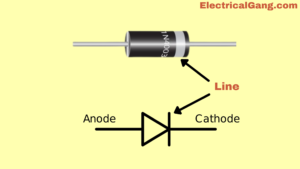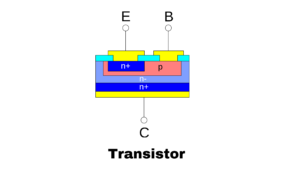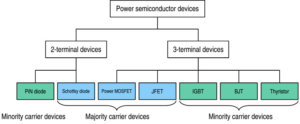![]()
Semiconductors are made of a material that is neither a good conductor nor a good insulator. This is what we call a semiconductor. Such devices are used in a wide range of applications due to their reliability, compactness, and low cost.
This is a separate component used in light emitters including power devices, compact optical sensors,s, and solid-state lasers. They have a large range of current and voltage handling capabilities. It has a current rating of over 5000 amperes and a voltage rating of over 100,000 volts. More importantly, semiconductor devices lend themselves to integration into complex but easily built-up, microelectronic circuits.
They have a potential future. Key elements of most electronic systems, including data processing, customer, and communications with industrial control equipment. In today’s article, we will see what are Semiconductor Devices. Today we will get information about the type of material used in the manufacture of Semiconductor Devices and their application.
Suggested Read: Whirlpool Dryer Not Heating? | Here’s What to Do!
What are Semiconductor Devices?
![]()
A semiconductor device is nothing more than an electronic component that works to absorb the electronic properties of semiconductor materials such as silicon, germanium, and gallium arsenide, as well as organic semiconductors. Semiconductor devices have replaced vacuum tubes in many applications.
They use electronic conduction in the solid state as opposed to thermal emission in a high vacuum. Semiconductor devices are manufactured for both separate conductors and integrated circuits. This includes several to billions of devices manufactured on a single semiconductor substrate or wafer and connected to each other.
Semiconductor materials are found to be useful by their behavior which can be easily manipulated by adding impurities and this is known as doping. Semiconductor conductivity can be controlled by the electric or magnetic field, by contact with light or heat, or by mechanical deformation of the doped monocrystalline grid. In this way, a semiconductor can be made an excellent sensor.
Current conduction in a semiconductor is free from electrons and holes. Which you collectively refer to as the charge carrier. The doping of silicon is done by adding a small number of molecules of impurity and also for phosphorus or boron. Which increases the number of electrons or holes in the semiconductor.
When a doped semiconductor has more holes it is called a P-type semiconductor. And when it has some free electrons it is known as an N-type semiconductor. Which mostly shows the charge mark of mobile charge carriers. The junction where P-type and N-type semiconductors are connected together is known as the P-N junction.
Diode:

A semiconductor is a simple device consisting of a single P N junction. The junction of P-type and N-type semiconductors forms a depletion field. In which current carrying is reserved due to a shortage of mobile charge carriers. When the device is biased forward, this depletion region is reduced. Which allows for significant carrying. Which is biased against the time diode. Only then less flow can be obtained and the depletion area can be expanded.
Bringing a semiconductor into the light can create an electron-hole pair. Which increases the number of free carriers and consequently increases the conductivity. Diodes optimized to take advantage of this phenomenon are known as photodiodes. Compound semiconductor diodes are also used to produce light, light-emitting diodes, and laser diodes.
Transistor:

The bipolar junction transistor is constructed by two P N junctions. Somewhere in that P – N – P or N – P – N configuration the region between the middle or base junction is usually very narrow. Other regions or their respective terminals are referred to as emitters and collectors. A small current introduced through the junction between the base and the emitter changes the properties of the base-collector junction so that it can conduct current despite being biased against it. This creates a large flow between the collector and the emitter and is controlled by the base-emitter flow.
Another type of transistor called a field-effect transistor works on the principle that the presence of an electric field can increase or decrease the presence of a semiconductor. An electric field can increase the number of electrons and holes in a semiconductor. Thus changing its conductivity. The electric field can be applied through a reverse-biased PN junction, and it forms an insulated electrode from the bulk material through a junction field-effect transistor (JFET) or oxide layer. And it forms a metal-oxide-semiconductor field. -Effective transistor (MOSFET).
The MOSFET is now the most commonly used one day in solid-state devices and semiconductor devices. The gate electrode is charged to generate an electric field. Which can control the conductivity of the “channel” between the two terminals. This is called source and drain. Depending on the type of conductivity in the channel, the device can be n-channel (for electrons) or p-channel (for holes) MOSFET.
Suggested Read: What is a Varactor Diode? | The Definitive Guide
Semiconductor Device Materials:
Silicon is the most widely used material in semiconductors. Its raw material is low cost and it is a simple process in quantity. Its useful temperature range makes it currently the best compromise between different competitive materials. The silicone used in the manufacture of semiconductor devices is currently made in bowls with a diameter of 300 mm which allows the production of wafers.
Initially, germanium was widely used in semiconductor materials. But its thermal sensitivity makes it less useful than silicon. Nowadays germanium is often combined with silicon for use in very high-speed SiGe devices. IBM is the leading manufacturer of such devices.
Gallium arsenide (GaAs) is also widely used with high-speed devices. But so far it has been difficult to make large-diameter bowls from this material. Significantly limits the size of the wafer diameter to that of silicon wafers. So that gallium arsenide is mass-produced. These devices are significantly more expensive than silicone.
List of Common Semiconductor Devices:

Image Credit: www.wikimedia.org
The list of common semiconductor devices typically includes devices from two terminals, three terminals, and four terminals.
The two-terminal devices are:
- Diode (rectifier diode).
- Gunn diode.
- Phototransistor.
- IMPATT diode.
- Laser diode.
- Schottky diode.
- PIN diode.
- Tunnel diode.
- Light-emitting diode (LED).
- Zener diode.
- Photocell.
- Solar cell.
- transient-voltage-suppression diode.
- VCSEL.
Three-terminal devices are
- Bipolar transistor.
- Darlington transistor.
- Insulated-gate bipolar transistor (IGBT).
- Unijunction transistor.
- Field-effect transistor.
- Silicon-controlled rectifier.
- Thyristor.
- TRIAC.
Four-terminal devices are:
- Photocoupler (Optocoupler).
- Hall effect sensor (magnetic field sensor).
Applications of Semiconductor Devices:
All types of transistors are used as buildings for logic gates. Which is useful for the design of digital circuits. In a digital circuit such as a microprocessor, a transistor acts as a switch (on-off). MOSFET for example determines the voltage applied to the gate whether the switch is on or off.
Transistors are used for analog circuits that do not act as a switch on or off. Proportional mouth They respond to a continuous range of inputs with a constant range of outputs. Oscillators and amplifiers are included in a common analog circuit. Circuits that interface or translate between analog circuits and digital circuits are known as mixed-signal circuits.
Advantages of Semiconductor Devices:
The advantages of Semiconductor Devices are as follows:
- Since no heating is required, the semiconductor device becomes operational as soon as the circuit is turned on.
- The semiconductor device does not produce any resonant noise during operation.
- Semiconductor devices require less voltage operation compared to vacuum tubes.
- The semiconductor device is shockproof.
- Semiconductor devices have no heating elements so no power is required to heat them to emit electrons.
- Due to its small size, the circuit connected to the semiconductor device is very compact.
- Semiconductor devices are cheaper compared to vacuum tubes.
- Semiconductor devices have an almost unlimited life.
- Semiconductor devices do not have to create any vacuum, so they do not have the problem of vacuum spoilage.
Disadvantages of Semiconductor Devices:
The disadvantages of semiconductor devices are as follows:
- The noise level in a semiconductor device is higher compared to a vacuum tube.
- Ordinary semiconductor devices cannot hear as much power as ordinary vacuum tubes.
- In the high-frequency range, they have weak responders.
Most Commonly Asked Questions:

What are semiconductors give examples.
Some common examples of semiconductors such as silicon, germanium, gallium arsenide, and elements close to the so-called “metalloid ladder” on the periodic table. After silicon, gallium arsenide is another common semiconductor of companion importance and is used in solar cells, laser diodes, microwave-frequency integrated circuits, and others.
Which is the best semiconductor device?
Silicon is the most widely used material in semiconductors. Its raw material is low cost and it is a simple process in quantity. Its useful temperature range makes it currently the best compromise between different competitive materials.
What is the simplest semiconductor device?
A semiconductor is a simple device consisting of a single P N junction. The junction of P-type and N-type semiconductors forms a depletion field. In which current carrying is reserved due to a shortage of mobile charge carriers. When the device is biased forward, this depletion region is reduced. Which allows for significant carrying.
What are the two types of semiconductors?
There are two main types of semiconductors, one is P-type semiconductors and the other is N-type semiconductors.
Like this post? Share it with your friends!
Suggested Read –